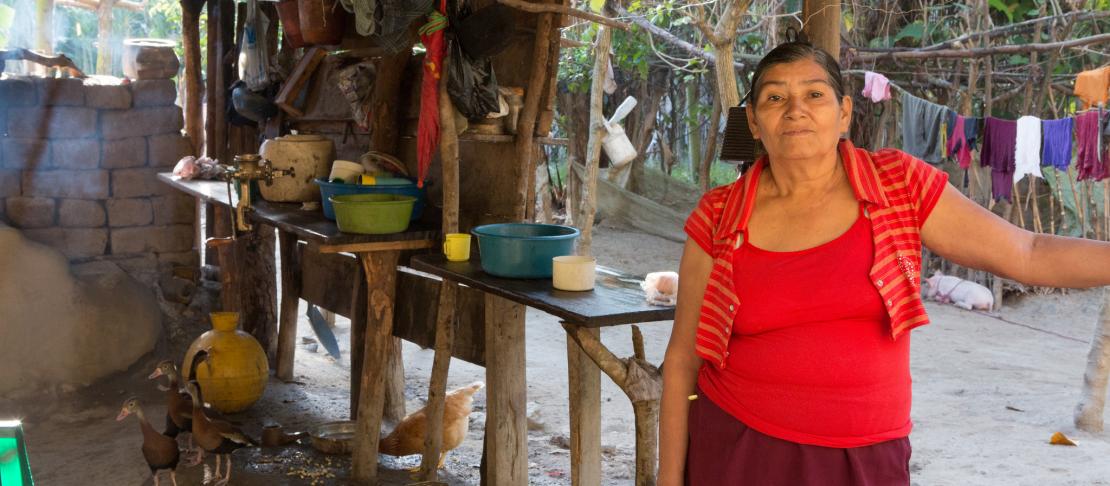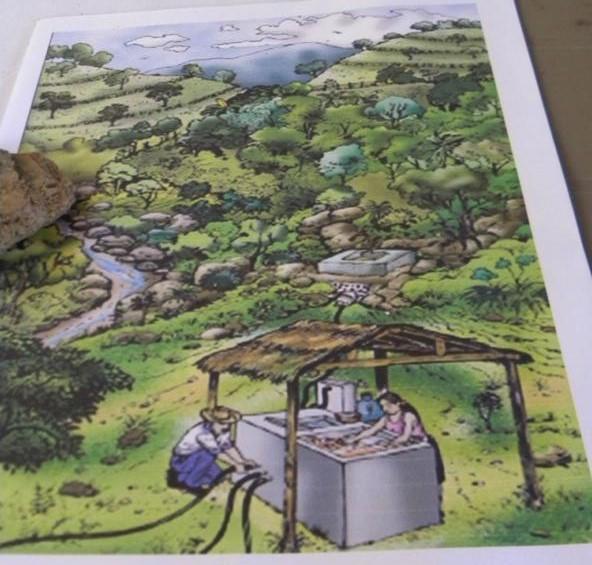Patriarchy in climate change narratives

What if some climate change projects and policies contribute to causing more inequalities?
When we hear about gender and climate change, we are often told that the impacts of climate change such as shifting rainfall patterns and more frequent droughts and floods are likely to deepen existing gender inequalities.
If you want to know more about research on closing the gender gap in farming under climate change:
- read our special blog series on Closing the gender gap
- watch the presentations and the panel discussion from the Closing the gender gap event
- follow the #AgGenderGap event hashtag on twitter
In a rural community of the so-called ‘dry-corridor’ of Nicaragua, all 32 women and men I interviewed answered “yes” to the following question: “have you heard about something called climate change?” This was not surprising to me since the communities in this region have long been the focus of the attention of aid agencies. Therefore, its inhabitants have been trained on a variety of environmental topics, including climate change.
So what is climate change for you?
What surprised me, however, is the extent to which the answers of the community members to my question ,“So, what is climate change for you?” were not about climatic changes. Indeed, typical responses were:
“This cooking stove is from climate change”.
“[Climate change?] Sure! The one who participates is my husband”.
“You know Juan, the guy you met who rides a motorbike? He is from climate change. He is the project technician.”
The community inhabitants relate climate change with the benefits, the activities or the local facilitator of the climate change adaptation project they are participating in. Concerning shifting rainfalls, people often repeated what they were told by the project facilitator and not what they experienced. One man shared that it was an NGO that “in 2009 brought climate change here”.
How should an adapted community look like?
Since 2009, NGOs have also brought training sessions on climate change adaptation to the community. During a workshop I attended, one of the exercises was to compare two landscape pictures that the participants were supposed to relate to their own surrounding landscapes; a degraded (black and white - on the right side) one with visible signs of erosion, monoculture and lack of water, with a protected (full colour - on the left side) one with soil and water conservation practices:


I observed the discussion on the pictures in a group of five farmers. When the time came to present the discussion of the group to the rest of the participants, Don Mariano, a farmer from the community described the conserved landscape as “technified” (tecnificado in Spanish) in contrast to the degraded landscape. For him, the characteristics of this ‘technification’ were related to all the 'technologies' that the climate change adaptation projects are promoting in the region.
The ‘technologies’ they referred to are the diversification of agricultural production, agro-forestry, the construction of water reservoirs, rainwater harvesting, as well as soil and water conservation techniques. They corresponded exactly to the ‘menu of climate change technologies’ promoted by the project. These ‘technologies’ are nothing else than good old indigenous or peasant water and soil conservation practices, which through the narrative of the climate change project acquire the status of ‘technologies’.
The problem is not the changing vocabulary. It stems from the fact that this discourse invisibilizes adaptation practices that are not promoted by the project. An example of such an invisible practice is the use of donkeys to fetch water further and further due to increasing droughts. This narrative legitimizes ‘technologies’ in the face of practices considering “less improved” as described by a climate change officer I interviewed.

donkeys are used to fetch water
Who should adapt?
In the training sessions, women are often pictured as the most vulnerable. This is justified by the facilitators based on their existing gender roles which include fetching water and firewood. In general there is a tendency to reaffirm these roles. For example, men are not invited to the training sessions on how to use the new wood-saving cooking stoves because cooking is seen as a female activity. This is an example of how ‘technologies’ that are presented under the gender perspective of the project do not tackle the transformation of current gender relations.
In the early 2000, long before the first climate change project, a women’s group was created in the community under the name of Las Vulnerables. A member of the group told me that a project technician suggested them to adopt this name:
"He told us that it was a good name for the group because some of us were single mothers … and … the others… well, the others… we were women”.
While today hopefully this would not happen anymore, the static picturing of women as vulnerables tied to their ‘traditional’ gender roles is still widespread among climate change practitioners. The consequence of this is that not enough attention is given to the intersection of factors that may reinforce climate vulnerabilities such as gender, class, ethnicity, age, participation in organizations, schooling and of course how one is pictured in the discourse: as an active winner or a passive victim.
Working towards gender equality in the context of climate change requires the recognition of the way existing forms of gender inequalities play out in climate change policies and interventions. This implies giving more attention to the discourses conveyed by the policies, the projects and the media. If we seek the transformation of gender relations, should not our words and actions show that we believe that it is possible? How could we ensure ‘technological’ solutions for climate change are not reinforcing gender inequalities? In sum, how could climate change practitioners be more responsible on how they address and talk about gender issues so that their interventions do not reinforce existing gender inequalities?
Noémi Gonda is a PhD Candidate at the Department of Environmental Sciences and Policy at the Central European University. She will present her research, Patriarchy and climate change: a feminist political ecology of climate change adaptation in rural Nicaragua, at the Closing the gender gap in farming under climate change event.
